See a few of the new faces at The Loft, The Treehouse and My Big Backyard! From Bubba, our giant African bullfrog, to Nigel, our lesser Madagascar tenrec, Raider the African grey parrot and Ms. Frizzle, our curlyhair tarantula, there are lots of new animal ambassadors to visit on your next trip to CMZoo!
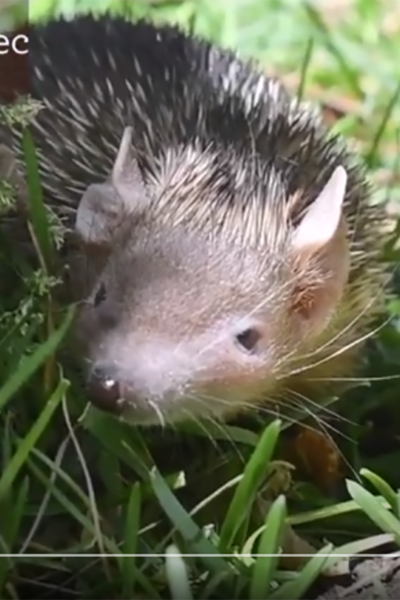

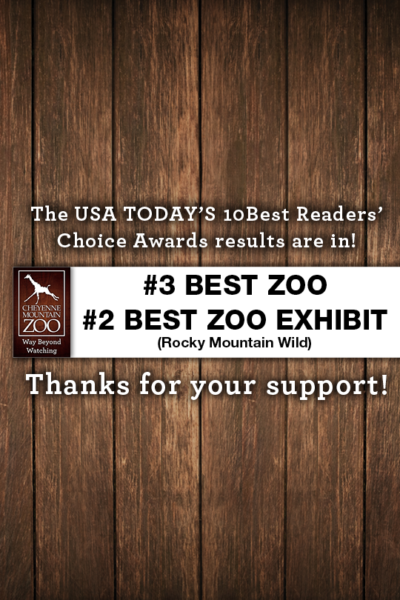

ROCKY MOUNTAIN WILD NAMED #2 BEST ZOO EXHIBIT IN NORTH AMERICA – For the sixth consecutive year, Cheyenne Mountain Zoo has been voted one of the top ten zoos in North America in the USA TODAY 10Best Readers’ Choice Awards. This time, America’s mountain Zoo was recognized in two categories: #3 Best Zoo in North America and #2 Best Zoo Exhibit in North America, for its Rocky Mountain Wild exhibit. This marks the highest ranking the Zoo has received in the Best Zoo category, and ties the highest ranking it has received for Best Zoo Exhibit.

Cheyenne Mountain Zoo aims to set itself apart by making every guest experience inspiring. With its simply stated vision, “Every Kid. Every Time. Goosebumps.” at its cultural core, CMZoo creates environments and experiences that bring people closer to animals. Exhibits are designed to remove as many physical barriers as safely possible between guests and animals. Guests can experience this for themselves by hand feeding the giraffe herd – one of the largest herds in North America, with 17 giraffe – or by waddling alongside penguins or getting eye-to-eye with a baby hippo at CMZoo’s newest exhibit, Water’s Edge: Africa. CMZoo’s goal is to foster connections that inspire guests to take action to protect animals and their habitats in the wild.
Rocky Mountain Wild, an area of the Zoo that is home to animals from the Zoo’s native region, was named #2 Best Zoo Exhibit in North America. Rocky Mountain Wild opened in the summer of 2008, appropriately hugging the highest elevations of CMZoo’s developed mountainside acreage. The area is home to a pack of endangered Mexican wolves, four Canada lynx, an Alaska moose, two North American porcupines, a bald eagle, two grizzly bears, three mountain lions and four river otters. Rocky Mountain Wild is known for its expansive natural exhibits, exquisite views, and enthusiastic and passionate team of animal keepers.
This is the fourth time Rocky Mountain Wild has been nominated in the Best Zoo Exhibit category, and the sixth time Cheyenne Mountain Zoo has been nominated in the Best Zoo category. A panel of travel experts, recruited by USA TODAY editors, nominated 20 North American Association of Zoos and Aquariums-accredited zoos and exhibits, and supporters had four weeks to cast their votes once per day for the nominees of their choice.
The 2022 USA TODAY 10Best Readers’ Choice Top Ten Best Zoos in North America, in ranking order, are:
1. Cincinnati Zoo & Botanical Garden – Cincinnati, Ohio
2. Omaha’s Henry Doorly Zoo and Aquarium – Omaha, Nebraska
3. Cheyenne Mountain Zoo – Colorado Springs, Colorado
4. Brevard Zoo – Melbourne, Florida
5. Memphis Zoo – Memphis, Tennessee
6. Audubon Zoo – New Orleans, Louisiana
7. Philadelphia Zoo – Philadelphia, Pennsylvania
8. Columbus Zoo and Aquarium – Columbus, Ohio
9. Houston Zoo – Houston, Texas
10. Saint Louis Zoo – St. Louis, Missouri

About Cheyenne Mountain Zoo
Cheyenne Mountain Zoological Society was founded in 1926. Today, Cheyenne Mountain Zoo, America’s mountain Zoo, offers comprehensive education programs, exciting conservation efforts and truly fantastic animal experiences. In 2022, Cheyenne Mountain Zoo was voted #3 Best Zoo in North America and CMZoo’s Rocky Mountain Wild was named #2 Best Zoo Exhibit in North America by USA TODAY 10Best Readers’ Choice Awards. It is Cheyenne Mountain Zoo’s goal to help guests fall in love with animals and nature, and take action to protect them. Of the 233 zoos and aquariums accredited by the Association of Zoos and Aquariums (AZA), Cheyenne Mountain Zoo is one of very few operating without tax support. Cheyenne Mountain Zoo depends on admissions, membership dues, special event attendance and donations for funding.
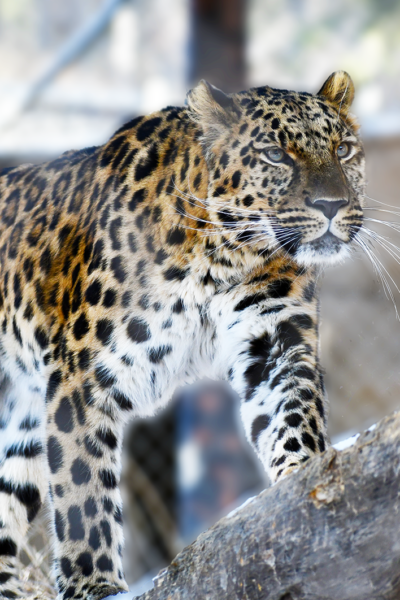

If you’ve visited Asian Highlands at CMZoo lately, you’ve probably noticed a lot of activity around the south leopard habitat. Our keepers, grounds and maintenance crews, and Zoo architect, have been working together to upgrade the leopards’ home, thanks to generous support from a friend of the Zoo.

The cross-departmental CMZoo design team brought different kinds of expertise to the table, each presenting goals and offering solutions to each other’s challenges. The first thing guests will likely notice is how much more of the exhibit they can see. The glass is gone, which means our guests can see the leopards better without a glare, and the huge log-and-steel crossbeam required for the glass-front structure could also be removed. Without that necessary structure, guests will have a much better view of a lounging leopard high in the trees. The leopards’ new perching is closer to the mesh, too, so the cats have a great view overlooking the Zoo. With as few barriers as is safely possible, guests can feel closer to them, which fosters the connections we believe inspire people to support conservation.
“Our goal was to make their home more enriching for the leopards, and more immersive for our guests,” said Basia Dann, Asian Highlands keeper. “They have tons of new perching, an upgraded waterfall, and mesh at the viewing area, instead of glass. So far, guests seem super excited about the glass being gone, and leopards are taking advantage of new opportunities in that habitat.”
Three leopards will use the habitat: Bhutan, a 13-year-old male snow leopard; Anya, an 8-year-old female Amur leopard; and Anadyr, a 6-year-old male Amur leopard. The Amur leopards will sometimes share the space together, and sometimes they’ll explore it alone. When they’re not in the newly remodeled leopard exhibit, they’re exploring other yards, including the guest-facing north leopard yard, just above Australia Walkabout.
Bhutan prefers the solitary life, so he’ll enjoy the new digs by himself. Based on Bhutan’s reaction to his first time in the new setup, he approves.
“Bhutan likes to lay in flatter, cooler spots, so we added some shady soil patches for him by the waterfall,” said Dann. “The first time he came into the exhibit, he spotted one of those patches and immediately went to lie down in it. It’s rewarding to see that our team’s hard work combined with our intimate knowledge of these cats is going to benefit them on a daily basis.”
Most CMZoo visitors are aware of the enrichment activities and training sessions keepers provide to keep our animals mentally and physically fulfilled. But, did you know the habitats themselves are designed to enrich our animals, and to encourage their natural behaviors?
For example, Rocky Mountain goats need vertical opportunities to climb, so their habitat reflects that. Hippos need a combination of water at various depths, and flat land to graze. Orangutans need objects to swing between. Leopards are expert tree climbers, so guests will notice ten new tree perches for them to navigate. They also like to rest up high in the trees, because it gives them a better vantage point. They’re often seen sleeping on their tummies with legs on either side of a large branch, and they have many opportunities for that in their new habitat.

“Our horticulture and grounds teams made the new perching adjustable, which is amazing,” said Dann. “If we find that our perching is too steep, or not steep enough, we can adjust a few bolts and see if the cats prefer things at a different angle. It means we’re not ‘stuck’ with the design, if we find our leopards aren’t engaging with it.”
The team also wanted to upgrade the habitat’s water feature. A previously unused waterfall has been revamped to help keep the leopards cool and provide an immersive, natural sound for guests.
“We want our guests to feel like they’re in the Far East or near a snowmelt stream in the Himalayas, where these big cats roam,” said Dann. “We thought we could do that with the waterfall, but we knew our leopards don’t like to be splashed. That was one of many examples of our teams coming together to find a solution that met all of our needs. Our keepers worked closely with our architect, horticulture, grounds and maintenance teams to get the flow of waterfall just perfect.”
The team also added some big rocks to the center of the pond, and set a low water level, so the leopards have cool rocks to nap on and they can wade into the shallow pond, if they choose to.
All three leopards have explored the new space, and Asian Highland keepers have been happy with their engagement.
“As keepers, we love the relationships we get to build with the animals, but we don’t want their lives to revolve around us,” said Dann. “We work to give them the comfort they seek from a habitat, but also problems to solve as independent beings. I love that we can provide these environments that give them more choices in their daily lives.”
There are a few final touches in the works, including a permanent waist-high fence to replace the temporary barrier that keeps guests at safe distance from the big cats’ mesh fencing. Guests can visit the leopards in Asian Highlands now.
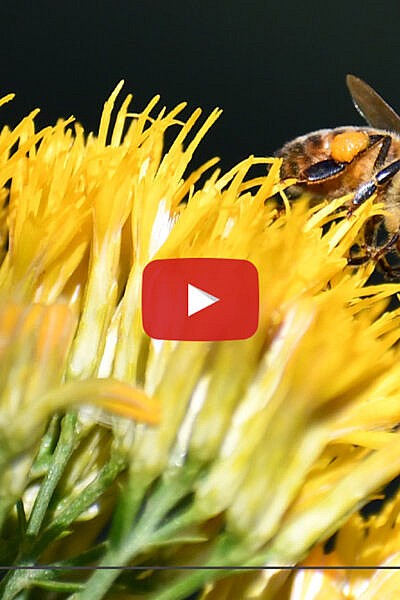

Have you noticed the colorful boxes on top of Grizzly Grill? Those are our new bees’ homes! We welcomed three honeybee colonies earlier this month, and they’re hard at work building their hives. Soon, guests will be able to visit an observation colony in The Treehouse in My Big Backyard. Until then, get up-close to our buzzing busy bees in this video, and perhaps learn a few fun facts about our flying friends.
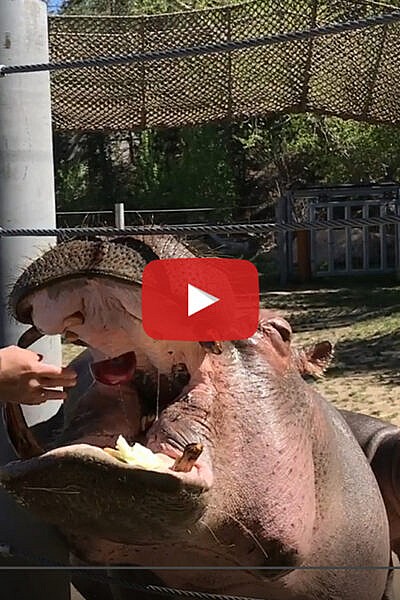

Our 10-month-old Nile hippo calf continues to grow and explore alongside his mom, Zambezi. Join Water’s Edge: Africa lead keeper, Philip, for an update on Omo and another milestone we expect Omo to reach soon: the 500-pound mark! We’ll be hosting a fun guessing game for a Zoo prize on our Facebook and Instagram accounts, so keep an eye out for that. In the meantime, enjoy this yard and poolside check-in with our hippo mom-and-son duo.
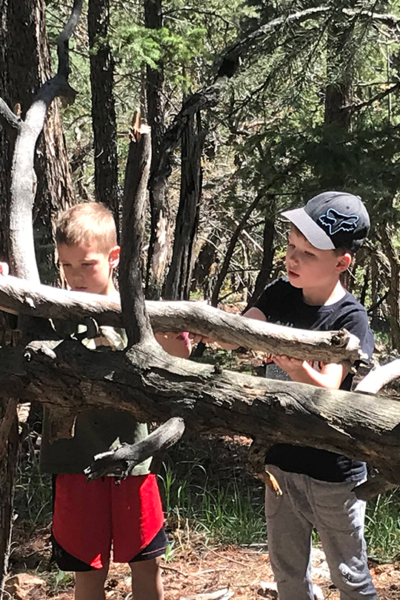

Spending time in nature can help reduce stress and trigger happiness! Cheyenne Mountain Zoo is offering small-group programs that foster connections with nature, the outdoors and each other. Through hands-on interactive experiences, classes will engage the whole person – physically, mentally and emotionally – and build a stronger connection with our natural world.
Outdoor School classes may occur on Zoo grounds or off-site in other nature-based environments. These classes focus less on animals at the Zoo and more on the powerful impact nature has on us as humans. When we care more about wild places, we take better care of them and the creatures that live there. This summer, Cheyenne Mountain Zoo is offering brand-new opportunities to connect with nature:

Nature Hikes: We’ll search for signs of wildlife, like tracks and scat, or explore with our senses on high-alert in a forest at night. After participating in a nature hike workshop, you will see that we share this amazing Colorado home with so many species (some more obvious than others!).
Nature Photography: Photography is a great way to hold onto memories, share stories, and gain knowledge. Photos can allow us to experience nature up-close without a time limit, so we can focus on the details better than our eyes can. Imagine getting closer to monarch eggs or a hummingbird without disturbing them. Through a lens, you can gain an even greater understanding and appreciation for nature.

Nature Play and Exploration: Sometimes the best way to connect with nature is without an agenda, with opportunities to explore, observe, and engage the senses. Though activities are built into these programs, they are guided by participants’ interests and seamlessly flow into their own experiences. We’ll look for specific colors found around us, identify birds, build forts, or climb rocks. These explorations are sure to ignite your inner “wild child.”
These classes and more can be found at cmzoo.org/outdoorschool. Stay tuned to that page for upcoming programs and opportunities for every season throughout the year. Space is limited in each class, so register soon!
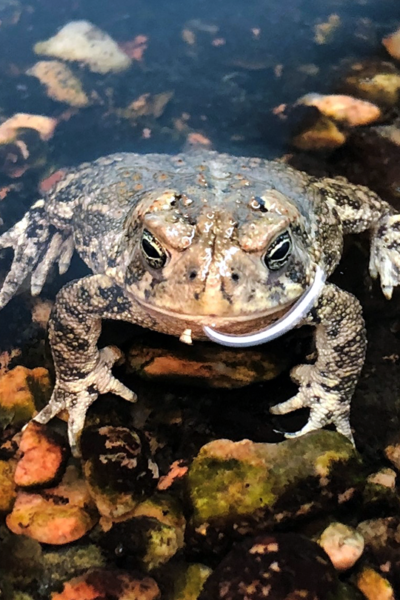

The soft serenade of Wyoming toad mating calls will soon echo through the hallways of the Cheyenne Mountain Zoo conservation center, as Field Conservation Coordinator Jeff Baughman welcomes ten breeding pairs of critically endangered amphibians back from 38 days of hibernation.

“It’s a busy time of year for us,” said Baughman, who has been intimately involved in Wyoming toad recovery at CMZoo since 2008. “The next several weeks are really crucial as we help bring this species back from the brink of extinction. Our adult toads are waking up from hibernation and moving into their breeding suites. Soon, we’ll have our hands full, welcoming thousands of their babies into our care.”
It may sound dramatic, but we believe it is. Wyoming toads are listed as “EW” or “Extinct in the Wild,” on the International Union for the Conservation of Nature (IUCN) Red List of Threatened Species.
Why give a hop? Toads are worth saving. They play a vital role at the center of the prairie environment, as the best bug control available and as sustenance for migrating birds and native mammals in search of food. If the toads don’t survive, the whole ecosystem suffers. They’re also what’s known as an indicator species, meaning they indicate the overall health of their ecosystem – and it’s in desperate need of attention.
Amphibians worldwide are facing mass extinction due to a pandemic known as the Chytrid fungus. Chytrid fungus causes a skin infection that hinders amphibians’ ability to breathe and absorb water. This often leads to organ failure and death. But, thanks to zoos like CMZoo, these hoppers stand a chance.
Over its 26-year commitment to the cause, CMZoo’s conservation team has released more than 41,629 tadpoles and nearly 1,444 toads into the wild. Next week, 66 more one-year-old toads will take their first hops into the wild to join them in the Laramie Basin of Wyoming.
Although the releases happen each June, the team works year-round to prepare for the toads’ and tadpoles’ hopeful sendoff. The yearly process begins by simulating hibernation for the toads. They’re placed in moss-lined containers inside a hibernaculum, which reduces their temperature slowly over a few days to 38 degrees Fahrenheit. The toads, very much alive, stay at that temperature for 35 days, receiving periodic checks from the conservation team who mist and monitor the sleeping beauties.
Over the last few days of their low-temp slumber party, the hibernaculum’s temperature is slowly raised back to around 70 degrees Fahrenheit, and they start to wake up. The cycle triggers their instinct to breed, as they would in the wild after winter, and that’s when the magic happens.
“We bring them out of the hibernaculum and place genetically desirable breeding pairs into tanks,” said Baughman. “We also play audio tracks from the Laramie Basin, which include Wyoming toad breeding calls, so the environment is just right. It only takes about a week for fertilized eggs to develop into tadpoles.”
The team will release thousands of those tadpoles into ponds and streams in Wyoming at the end of June. Some of the tadpoles hatched this year will stay at the Zoo, under the care of the conservation team, to grow into yearling toads before being released the following summer. The tadpoles held back get a yearlong head start at the Zoo, hence the term ‘headstart toads.’ New this year, others will be held back for two years to see if wild reproduction increases with more sexually mature toads being released. Clean Chytrid-free water, climate controls and plenty of yummy meals of crickets and cockroaches give them all a better chance at surviving in the wild. Not to mention, they won’t be on the menu themselves. Most importantly, it means there are more toads ready to breed in the wild because they will have survived and reached reproductive maturity at two years old.

When they’re about eight months old, each toad is microchipped, so when the team goes back to the release location, they can track survivorship or prevalence of the Chytrid fungus. The microchips also help the team identify and monitor individuals during their stay at CMZoo.
Amphibian allies don’t need a hibernaculum or a fresh supply of crickets to help these little guys. Disinfecting outdoor recreation gear used in and near water can stop the spread of the deadly Chytrid fungus. Leaving your fishing or kayaking gear in a hot car or the sun to dry it out for 3 hours, will kill the fungus and prevent water enthusiasts from accidentally transferring it to another body of water.
“Recovering a species definitely takes time,” said Baughman. “But we’ve seen some promising signs that the toads are starting to bounce back – or hop back – in the wild. During field surveys, we’ve seen wild egg strands, which means toads or tadpoles that have been released, or the offspring of released toads, are starting to do the work for us. As a conservationist, there’s nothing you want more than to be out of work.”
This year, Baughman and his team are taking CMZoo followers on a wild real-time adventure, following a group of tadpoles throughout their year of development in the CMZoo conservation center. We’ll share the successes and the struggles these tiny creatures face, even in the safety of their nursery under the care of our team.
“We have a pretty good record of raising tadpoles to adulthood, but they really struggle in the wild,” said Baughman. “In the wild, only about four of every thousand tadpoles makes it to maturity, and that’s on a good year. On a bad year, only about two survive to breeding age, on average.”
Starting in early June, tune into CMZoo’s social channels, on Facebook, Instagram and YouTube, to get closer than ever to ten little tadpoles. Watch in awe as eggs turn into tadpoles. Be mesmerized by metamorphosis, as they grow legs and absorb their tails, earning the title of toadlet. Root for them as they learn to hunt and grow into dime-sized defenders of their species. Then, follow along as they go through the year-long preparation for their eventual wild release in June 2023. We’ll keep you posted.
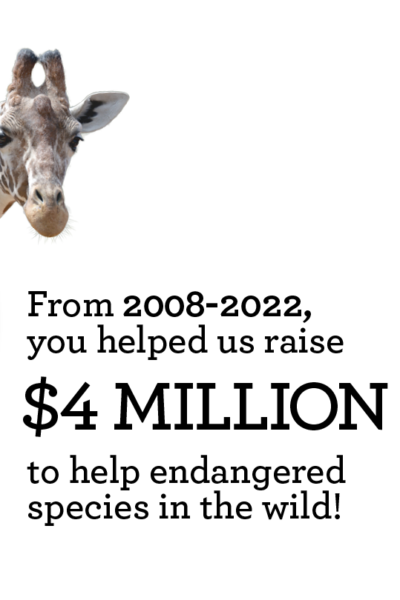


Cheyenne Mountain Zoo and its guests and members are celebrating a huge milestone, having raised $4 million for wildlife and wild places, since the Zoo’s Quarters for Conservation (Q4C) program launched in 2008.
Every visitor to the Zoo receives three “quarter” tokens representing the 75¢ Q4C allocation from their admission fee. They can then show support for the legacy projects they love by placing their tokens in the corresponding slots in the Q4C kiosks.
In recent years, CMZoo staff have traveled to Africa, Central America, Indonesia and the prairies of Wyoming and Colorado, to lend their expertise in support of our partner organizations around the world. Our guests’ support is far-reaching. It benefits the organizations we support, their teams, local communities and the animals they protect. It also enriches the lives of our teammates who return to the Zoo to share new experiences and reignited passions for protecting wildlife and wild places.
Before launching Q4C in 2008, CMZoo was supporting conservation, but at a fraction of what is possible now. As more people visit the Zoo each year, we can contribute more money to conservation. In the past few years, CMZoo has collected about half a million dollars per year through Q4C. In the Zoo’s 2021 fiscal year, guests contributed nearly three-quarters of a million dollars. The Zoo’s membership and EdVenture programs also contribute to conservation. CMZoo’s current beneficiary species include giraffe, Panama frogs, orangutans, black-footed ferrets, African elephants and rhinos, Wyoming toads and African vultures.
About Our Current Q4C Legacy Projects
Q4C beneficiary species truly run the gamut, from 18-foot-tall giraffe in Africa, to tiny toads in Wyoming.
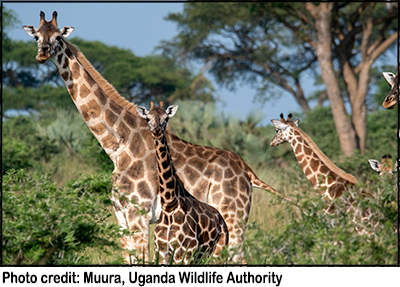
Q4C helps support a multi-organizational giraffe conservation project in Uganda, called Operation Twiga. Operation Twiga began in 2016 to give giraffe a better chance of survival by establishing new populations of giraffe in safe habitats, in partnership with Giraffe Conservation Foundation, Uganda Wildlife Authority and others. Operation Twiga V (2020) was a continuation of Operation Twiga IV (2019), which CMZoo staff attended to assist with anesthesia and moving the giraffe. Both giraffe translocations contributed to populations in Pian Upe Wildlife Reserve, an historic habitat in Uganda where giraffe hadn’t existed for more than 20 years. Ongoing Q4C funding supports the teams who continue to monitor and protect these newly established wild populations.
Q4C also funds CMZoo’s on-site breeding programs for black-footed ferrets and Wyoming toads. These endangered prairie species were declared extinct in the wild in the 1980s and early 1990s, and are only around today because of decades of recovery efforts from zoos and partner organizations. 18 ferret kits were born at CMZoo in the 2021 breeding season, and six juveniles were released into their natural habitat by CMZoo staff and wildlife partners in the fall. In Spring and Summer 2021, CMZoo staff released 228 yearling “headstart” toads, 58 metamorph toadlets, and 5,338 tadpoles to their native habitat in Wyoming. Summer 2022 breed-and-release efforts are well underway, and later this year, more of these vital species will join their relatives in the wild, thanks to CMZoo guests’ support.

Wyoming toads are symbolic of so many amphibian species in decline all over the world, including Panamanian frogs, which also receive support thanks to Q4C funds and frontline CMZoo staff support. In February 2019, three CMZoo staff members went to Panama to assist the Panama Amphibian Rescue and Conservation Project by remodifying two feeder insect pods into frog pods. For this 10-day trip, the goal was to set up two shipping containers to house and breed approximately 450 additional frogs brought in from El Valle Amphibian Conservation Center, and later released. This involved disinfecting the shipping containers, painting, installing plumbing and water filtration, assembling racks, and drilling and prepping tanks.
CMZoo’s work to save habitats for orangutans through advocacy for sustainable palm oil production is also largely supported by Q4C. Thanks to that financial support, CMZoo’s sustainable palm oil team consults staff at other conservation organizations on starting their own palm oil programs. The CMZoo sustainable palm oil team continued to focus on international work through the World Association of Zoos and Aquariums (WAZA). The team was instrumental in the creation of the WAZA Short Guide on Sustainable Palm Oil and the sustainable palm oil shopping app, which allows shoppers to scan the barcodes of items to learn whether producers have committed to using sustainable palm oil.

Through Q4C, CMZoo also supports a conservation partner called Tsavo Trust – an organization in Kenya that works to protect the last of the big tuskers, which are African elephants with tusks weighing more than 100 pounds. CMZoo’s funds helped Tsavo Trust build permanent housing that allowed staff to live on the land where these critically endangered giants live. It also paid for pilot hours of frontline aerial surveillance that protects rhinos and elephants from poachers seeking their ivory.
The seventh Q4C legacy partner is VulPro – protectors of African vultures. The dedicated staff at VulPro, in South Africa, save vultures who have been injured as wild birds, and rehabilitates them to release. Those that are too injured to survive in the wild find a permanent home at VulPro.
For more information about these projects and Quarters for Conservation, visit cmzoo.org/conservation.
About Cheyenne Mountain Zoo
Cheyenne Mountain Zoological Society was founded in 1926. Today, Cheyenne Mountain Zoo, America’s mountain Zoo, offers comprehensive education programs, exciting conservation efforts and truly fantastic animal experiences. In 2021, Cheyenne Mountain Zoo was voted #4 Best Zoo in North America and CMZoo’s Rocky Mountain Wild was named #3 Best Zoo Exhibit in North America by USA TODAY 10Best Readers’ Choice Awards. It is Cheyenne Mountain Zoo’s goal to help guests fall in love with animals and nature, and take action to protect them. Of the 242 zoos and aquariums accredited by the Association of Zoos and Aquariums (AZA), Cheyenne Mountain Zoo is one of just a few operating without tax support. Cheyenne Mountain Zoo depends on admissions, membership dues, special event attendance and donations for funding.
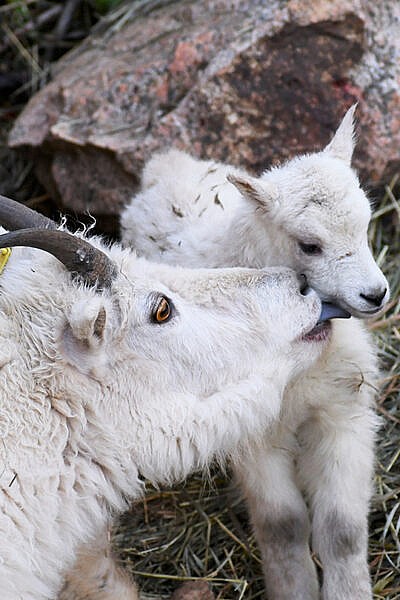

There’s a very fluffy, adorably squeaky new kid on the rocks at Cheyenne Mountain Zoo. Around 3:15 p.m. on Wed., May 4, first-time Rocky Mountain goat mom, Lena, delivered a baby who was on her feet and working out her wobbly legs within minutes.
“Rocky Mountain goat kids are famous for being capable right out of the gate,” said Michelle Salido, lead keeper at Cheyenne Mountain Zoo. “They’re native to some pretty demanding habitats, so they have to be hearty to thrive in those elements and that’s what we’re seeing with this little one. She’s getting the hang of her lanky legs, and we’ve already seen her climbing up rocks and on her mom.”
After a short intervention from animal care staff, the baby and mom are bonding well, and guests can see them – as long as they choose to stay visible – in the Rocky Mountain goat habitat.
The animal care team stayed with Lena and her baby through the evening on Wednesday, because they hadn’t seen nursing. The first feeding is really important for a newborn animal, because brand-new mother’s milk contains colostrum, which has important nutrients and antibodies. After about three hours of the kid attempting to nurse unsuccessfully, the team stepped in and hand-fed its first meal.
While feeding the baby a colostrum substitute, the team confirmed that it’s a girl and that she weighs about 8 pounds. After feeding the little one, the team reunited her with her mom and the two have been bonding well since. The baby has been seen nursing consistently since last night, so the team hopes mom and daughter will continue to take it from here.
“It took Lena a little while to get the hang of nursing, which isn’t unusual for a first-time mom, but since then, we’ve seen her really embrace motherhood,” said Salido. “She’s being protective, and she’s letting her daughter snuggle up to her and climb on her. She was really focused on making sure the baby was clean – especially her ears. She was licking the kid’s ears and the baby was making little goat whinnying sounds and wobbling around during the grooming session. They’re so cute.”
Following Cheyenne Mountain Zoo’s tradition of not naming baby animals until they’re at least a month old, there are no immediate plans to name the youngster. Fans can follow Lena’s baby as it grows up on the Zoo’s social media channels.
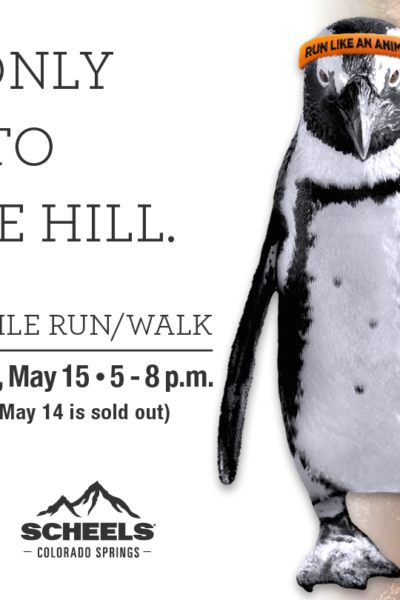

Cheyenne Mountain Zoo hosts its 14th annual Run to the Shrine, featuring a waddling African penguin as this year’s event mascot, on Sat., May 14 and Sun., May 15, 2022. Saturday’s event is sold out, but there’s still room to join in the fun on Sunday!
Run to the Shrine is the only time of the year foot traffic is allowed on the road to the Will Rogers Shrine of the Sun.
The 4-mile up-and-back course offers breathtaking views of Colorado Springs, Garden of the Gods, and Pikes Peak as participants run by roaring lions and more through the Zoo, up to the Shrine and back. The challenging course, with a nearly 1,000-foot elevation gain, is good practice for competitive runners gearing up for summer races, and a fun challenge for weekend warriors and families. Runners and walkers are welcome, and jogging strollers equipped with automatic hand brakes and tethers are allowed on the course.
Registration includes Zoo admission for the evening, a commemorative performance T-shirt featuring Ivy, CMZoo African penguin, and access to a post-event celebration at the Zoo’s Lodge at Moose Lake. All proceeds help feed and care for Cheyenne Mountain Zoo’s animals. Since the Zoo doesn’t receive any tax support, community events like Run to the Shrine help keep the zoo “running.”
Fast Facts
Run to the Shrine at Cheyenne Mountain Zoo
5 to 8 p.m.
Saturday, May 14 (SOLD OUT)
Sunday, May 15
4-mile run/walk through the Zoo, up to Will Rogers Shrine of the Sun, and back to the Zoo
Advance registration is required.
Register now at cmzoo.org/run.
Run to the Shrine is sponsored by Children’s Hospital Colorado and Colorado Springs SCHEELS.
About Cheyenne Mountain Zoo
Cheyenne Mountain Zoological Society was founded in 1926. Today, Cheyenne Mountain Zoo, America’s mountain Zoo, offers comprehensive education programs, exciting conservation efforts and truly fantastic animal experiences. In 2021, Cheyenne Mountain Zoo was voted #4 Best Zoo in North America and CMZoo’s Rocky Mountain Wild was named #3 Best Zoo Exhibit in North America by USA TODAY 10Best Readers’ Choice Awards. It is Cheyenne Mountain Zoo’s goal to help guests fall in love with animals and nature, and take action to protect them. Of the 242 zoos and aquariums accredited by the Association of Zoos and Aquariums (AZA), Cheyenne Mountain Zoo is one of just a few operating without tax support. Cheyenne Mountain Zoo depends on admissions, membership dues, special event attendance and donations for funding.